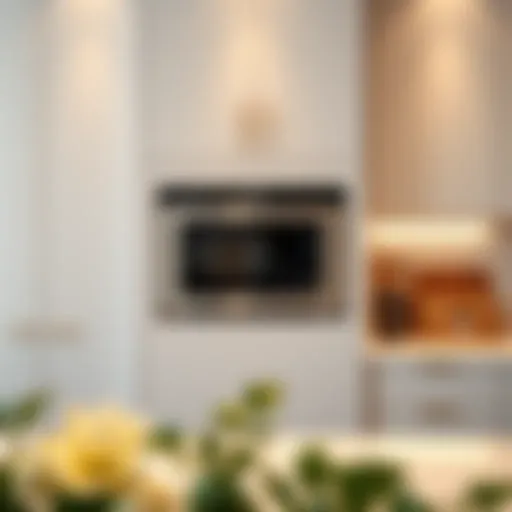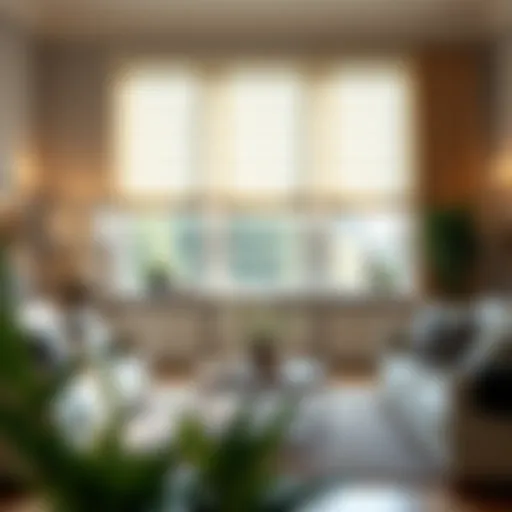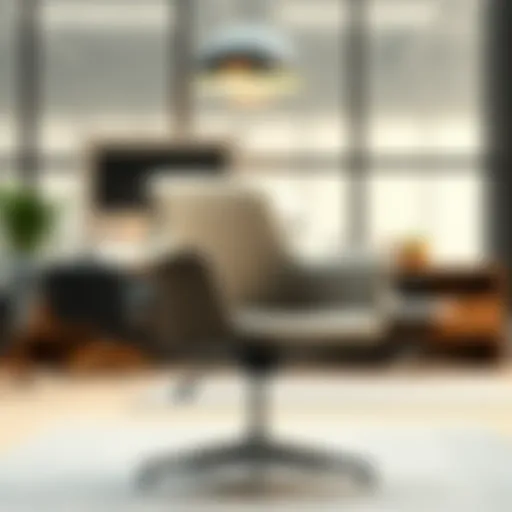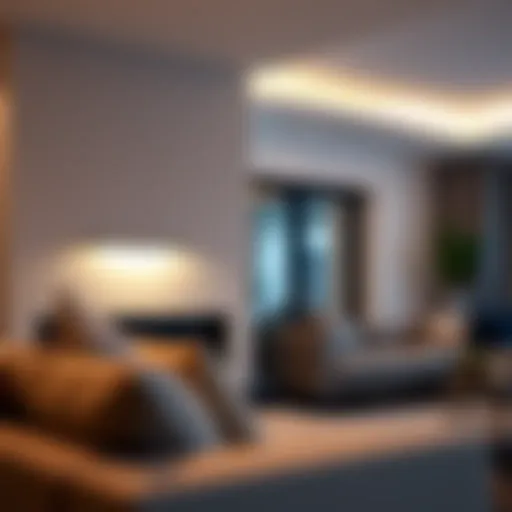Comprehensive Guide to Sofa Connectors for Furniture Lovers
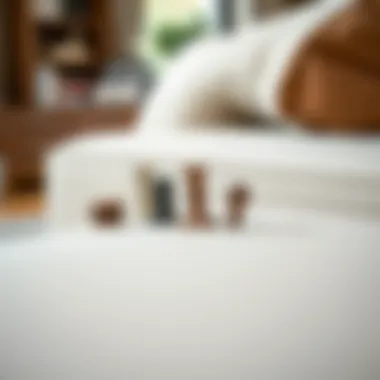

Intro
Sofa connectors may not be the first thing that comes to mind when furniture enthusiasts think about enhancing their living spaces, but they play a crucial role in both functionality and aesthetics. These often-overlooked elements help maintain the integrity of furniture configurations, ensuring a comfortable and lasting experience. Whether you're a professional in the furniture industry or a homeowner looking to revamp your home, understanding the different types of sofa connectors and their relevance can elevate your furniture game significantly.
In recent years, the market has seen a surge in innovative connector designs, reflecting modern needs for versatility and style. This guide aims to unravel the complexities of sofa connectors, addressing key points such as the types available, materials used, and their impact on durability and visual appeal. Additionally, we offer practical tips for selecting and maintaining these components, empowering you to make informed decisions when it comes to your furniture investments.
As we embark on this journey, let's dive deeper into the design trends shaping the world of furniture today.
Prologue to Sofa Connectors
In the grand design of furniture, it’s often the little things that make a substantial difference. Sofa connectors, while rarely the star of the show, play a pivotal role in ensuring that your furniture not only looks good but is also functional and stable. When you settle down on your couch after a long day, you rarely think about the unseen elements that hold it together. That’s where sofa connectors come into the picture. This section will explain what sofa connectors are and why they matter in the overall tapestry of furniture design.
Defining Sofa Connectors
Sofa connectors are essentially hardware elements that join different segments of a sofa. They can take various forms, such as metal brackets, dowels, or even flexible straps. Depending on the design of a couch, these connectors allow for adjustments or changes in configuration and ensure that everything fits snugly.
When people talk about sofa connectors, they're referring to those key components that ensure your multi-piece sofas stay united. They’re akin to the glue of a well-structured relationship, keeping each part secure, no matter how much life gets tossed at them. The specifics can range from standard metal brackets that you find in everyday pieces, to innovative hidden connections designed not to disrupt an aesthetic appeal. In essence, the definition stands clear: They are the unsung heroes of your beloved sofa.
Importance of Connectors in Sofa Design
The significance of sofa connectors extends well beyond mere assembly. Here are some critical reasons why these connectors are more important than they might initially seem:
- Stability and Durability: A well-connected sofa is key to stability. Poorly connected pieces can lead to wobbling or even structural failure over time. Good-quality connectors can withstand daily use and ensure that your sofa remains sturdy.
- Design Flexibility: In a world where customization is highly valued, sofa connectors allow for the versatility to rearrange seating arrangements as per your liking. Whether you want an L-shaped couch for movie nights or a straight configuration for hosting guests, the right connectors make these transitions possible.
- Aesthetic Integration: In many modern designs, connector systems are ingeniously tucked away, so they don't disrupt the visual harmony of the furniture. Hidden connectors improve the overall aesthetics while functioning effectively, a clever balancing act that’s crucial in attracting discerning buyers.
- Ease of Maintenance: Sofas aren't meant to be disposable goods. Quality connectors allow for easy disassembly and reassembly, so if a fabric needs cleaning or a cushion gets damaged, repairs can be made without a headache.
"Quality connectors not only enhance a sofa's longevity but also elevate its design appeal."
Types of Sofa Connectors
Understanding the different types of sofa connectors is crucial in appreciating how they contribute to the overall functionality and stability of furniture designs. Each type serves specific purposes, catering to various design aesthetics, functionality, and user needs. Selecting the right connector can play a significant role in not only the durability of the sofa but also in how versatile and adaptable the piece can be in a living space.
Standard Connectors
Standard connectors are the bread and butter of sofa construction. These connectors are usually visible and easy to install, making them popular among manufacturers and DIY enthusiasts alike. They are often made of metal or strong plastic and can be easily found in most furniture stores or online. Their design allows for straightforward assembly and disassembly, which is perfect for anyone who may want to rearrange or relocate their furniture.
- Durability: Most standard connectors are built to last, capable of withstanding significant weight without compromising integrity.
- Accessibility: Since standard connectors are widely available, sourcing replacements or additional parts is generally hassle-free.
However, one drawback can be aesthetics; as they are visible, they might not suit every design preference.
Pivot Connectors
Pivot connectors are a step away from the basic connectors. These components provide additional flexibility, allowing parts of the sofa to move independently. This is particularly useful for sectional sofas where various configurations might be desired. The pivot mechanism enables smoother transitions between different setups, enhancing comfort and functionality.
- Adaptability: With pivot connectors, homeowners can effortlessly change the layout of their sofa. Perfect for family gatherings when the seating arrangement may require a shift.
- Comfort Enhancement: They allow for dynamic positions, contributing to a more enjoyable experience.
On the flip side, the complexity of pivots can make repairs or replacements more challenging compared to standard connectors.
Strap Connectors
Strap connectors are less common but have their place in modern sofa construction, especially in pieces that emphasize lightweight portability. These connectors use durable fabric straps, contributing to a softer appearance while still providing adequate strength to hold components together. They are typically seen in more casual or contemporary designs, offering a relaxed feel.
- Minimalist Aesthetic: They can blend well with modern decor, enhancing the furniture's overall look without being overwhelming.
- Lightweight Options: Great for those who move or rearrange their furniture frequently.
However, they might lack the weight capacity of metal connectors, making them less suitable for heavy-use areas.
Hidden Connectors
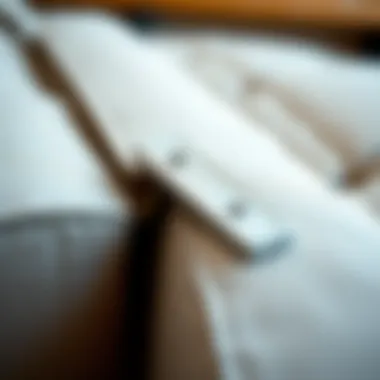

Hidden connectors are the unsung heroes of sofa design. Often used in high-end furniture, these connectors are concealed within the structure of the sofa. This approach not only enhances the visual appeal of the piece by keeping unsightly hardware out of view but also protects the connectors from wear and tear.
- Enhanced Aesthetics: Furniture with hidden connectors often looks more polished, as the design remains clean and uncluttered.
- Longer Lifespan: By protecting connectors from external elements, these structures can potentially last longer without the need for frequent replacements.
On the downside, should repairs be needed, accessing hidden connectors can be a cumbersome process.
"Understanding the types of connectors empowers furniture enthusiasts to make informed choices, ensuring that their selections align with both function and design credentials."
Materials Used in Sofa Connectors
Understanding the materials employed in sofa connectors is critical for discerning furniture enthusiasts. Each material offers unique traits that influence not only the connector's performance but also the overall aesthetic and durability of sofas. The selection of materials can determine the longevity of the furniture piece, the ease of assembly, and its resilience to wear and tear. Moreover, consumers are increasingly leaning towards sustainable options, making material choice an essential factor in modern furniture design.
Metal Connectors
Metal connectors are often seen as the backbone of a sturdy sofa. Typically made from steel or aluminum, they boast strength and longevity that is hard to beat. These connectors can withstand substantial weight, making them ideal for larger sofa pieces or sectional arrangements. The ability to lock components securely together ensures stability, providing peace of mind for homeowners and designers alike.
One of the great benefits of metal connectors is their resistance to environmental factors. Unlike wood, they won’t warp in humid conditions, and unlike plastic, they won't crack under pressure. Additionally, many metal connectors come finished to resist rust, which makes them suitable for various indoor and some outdoor applications.
Advantages of Metal Connectors:
- Longevity: They tend to last much longer than their counterparts.
- Stability: Excellent for retaining structural integrity over time.
- Minimal Maintenance: Often resist corrosion and don’t require much upkeep.
Plastic Connectors
On the lighter side of the spectrum, plastic connectors present a different set of advantages. Typically made from high-density polyethylene or polypropylene, these connectors are lightweight yet durable. They can be an excellent choice for furniture that needs to be mobile or rearranged frequently, like modular sofas.
Plastic connectors often come in various colours and styles, making them conducive for aesthetic customization. They are less expensive than metal and wooden options, which can be attractive for budget-conscious buyers. However, one should keep in mind that not all plastic connectors are created equal; some may not hold up as well under stress, especially in heavier sofas.
Benefits of Plastic Connectors:
- Cost-Effective: Generally less expensive and easily accessible.
- Lightweight: Ideal for easy transport and assembly.
- Versatile Design: Available in various styles and colours, enhancing overall aesthetics.
Wooden Connectors
Wooden connectors are often a nod to tradition, providing a warmer, more organic element to furniture design. They are typically crafted from hardwoods, which offer both strength and visual appeal. The charm of wooden connectors lies in their ability to blend seamlessly with the overall wooden aesthetic of the sofa, making them a popular choice for rustic or classic styles.
However, wooden connectors may require more maintenance due to potential issues like warping, cracking, and susceptibility to pests or moisture. Choosing high-quality hardwood can mitigate some of these risks, but consumers must also consider the environment in which the furniture will be placed. A sofa with wooden connectors might be best suited for controlled conditions, away from humidity or direct sunlight.
Key Points about Wooden Connectors:
- Aesthetic Appeal: They add a natural touch to furniture.
- Eco-Friendly Option: Can be sourced sustainably.
- Sturdiness: Quality wood connectors can offer significant strength, but require care.
Ultimately, the choice of connector material is influenced by various factors including design preferences, budget, and the intended use of the sofa. By understanding the benefits and limitations of metal, plastic, and wooden connectors, furniture enthusiasts can make informed decisions that ensure their sofas not only look good but will stand the test of time.
"In the end, the right materials play a crucial role in how well a sofa performs and how long it lasts, bridging the gap between aesthetics and functionality."
For more insights and comprehensive information on furniture design, consider visiting resources like Wikipedia on Furniture or Britannica on Design.
Functional Aspects of Sofa Connectors
The world of sofa design is bustling with creativity, yet amid all the aesthetic choices, the functional aspects of sofa connectors play a pivotal role. These connectors substantially influence not only how a piece functions but also its longevity and user experience. Understanding these aspects can aid homeowners, designers, and enthusiasts alike in making informed decisions about their furniture investments.
Enhancing Stability
Stability is the cornerstone of any piece of furniture; it’s what keeps you safe and sound when you lean back after a long day. Sofa connectors significantly bolster stability by ensuring each part of the sofa remains firmly attached to one another. Think about it: when you encounter a sectional sofa that shifts or topples easily, often it's due to subpar connectivity.
Connectors such as standard metal clips or even pivot connectors are adept at absorbing weight and stress, making the whole structure less prone to wobbling. For instance, a modular sofa held together with robust strap connectors will likely withstand the test of time better than a simple frame without such reinforcements. This highlight on stability goes hand in hand with user experience, where peace of mind is invaluable.
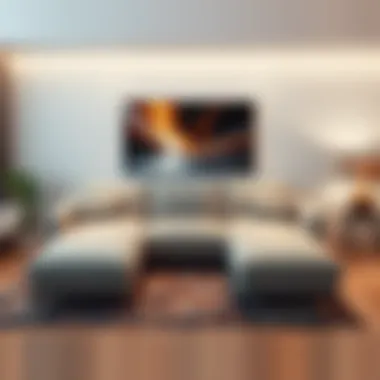

Facilitating Configurations
Flexibility in design is a hallmark of modern furniture, and sofa connectors offer this in spades. Whether you want to shift from a traditional L-shape to a cozy U-shape, the connectors' ability to facilitate easy reconfigurability cannot be overstated. Many modular systems use connectors that allow users to mix and match components as their needs change.
A great example of this versatility is seen in brands like IKEA, which has tailored their sofa ranges to be disassembled and reassembled with ease, thanks to innovative hidden connectors. This means you can transform your living space while also being able to pack it up should you move – a perfect solution for those who frequently swap homes or simply like a change.
Another practical consideration is that this adaptability often leads to better utilization of space, allowing homeowners to optimize their layouts according to personal taste and lifestyle needs.
Impact on Comfort
We often overlook how connectors can greatly affect comfort, yet they are integral to the overall sofa experience. The manner in which cushions are supported largely relies on the connectors used in the framework. Picture a sofa with connectors that distribute weight evenly: the experience of sitting down is not only pleasant but ensures the cushions remain supportive rather than sinking too low over time.
Soft yet durable connectors maintain a seamless alignment between the back and seat cushions creating that beautiful alignment where comfort and aesthetics merge. Poorly designed connectors can, in contrast, lead to uneven surfaces, which can result in unpleasant experiences and even physical discomfort.
In sum, the functional aspects of sofa connectors play a significant role in enhancing stability, facilitating various configurations, and impacting overall comfort. All these factors ensure that the investment in a quality sofa yields dividends in both usability and enjoyment for years to come.
"In the intricate dance of furniture design, connectors are the unseen partners that keep everything in harmony."
By paying attention to these functional attributes, you're not only improving your immediate comfort but also investing wisely in the longevity of your furniture.
Choosing the Right Sofa Connectors
Selecting the right sofa connectors is not just a matter of convenience; it directly impacts the overall performance and longevity of your furniture. When it comes down to it, the connectors are like unsung heroes in the sofa world—holding everything together while allowing for flexibility and comfort. In this section, we’ll unravel the essential considerations that will guide you toward making an informed choice.
Assessing Your Sofa Requirements
Before you start choosing connectors, it’s critical to assess what your sofa actually needs. Factors such as size, style, and how often you rearrange can dictate what type of connector works best. For example:
- Modular Sofas: If you have a modular design, connectors should enable easy rearrangement. Look for pivot connectors that allow for fluid movement.
- Space Constraints: In tight living areas, consider strap connectors which are usually more compact and can handle smaller segments without taking too much room.
- Usage Frequency: If your sofa is in constant use, especially in households with kids or pets, durability is key. Metal connectors might be the way to go, as they provide stability and reliability.
Taking the time to evaluate these factors ensures your choice not only complements your sofa’s style but also meets its operational demands without a hitch.
Weighing Aesthetics vs. Functionality
When it comes to furniture design, aesthetics can be as vital as functionality. While you want your sofa connectors to do their job well, they shouldn’t clash with the overall look of your living space. Consider the following:
- Material: Metal connectors might offer unparalleled stability, but they can be a sore sight if they peek out from underneath your sofa. On the flip side, wooden connectors can add a touch of elegance but may not provide the same robustness as their metal counterparts.
- Finish Options: Some connectors come with finishing options that can blend in with your couch’s fabric or material. A matte finish can be less conspicuous than a shiny one.
- Access and Visibility: Think about how visible the connectors will be in your setup. If they’re hidden, you may prioritize functional capabilities more than looks.
Striking the right balance between aesthetics and functionality is essential—after all, you’ll want your sofa to both look fabulous and perform seamlessly.
Evaluating Manufacturer Options
Last but certainly not least, evaluating your manufacturers is key. Not all sofa connectors are created equal, and knowing where to source your connectors can aid significantly in making the best choice. Some important steps include:
- Reputation: Opt for well-regarded manufacturers known for their high-quality connectors. User reviews and testimonials can often reveal insights not readily found in product descriptions.
- Warranty and Support: Consider manufacturers who offer warranties. This indicates a level of confidence in their product’s durability and gives you peace of mind.
- Customization Options: Some manufacturers provide tailored solutions, which can be useful for specific sofa configurations. If you have a unique design or need connectors for less common custom pieces, look into companies that specialize in bespoke options.
In crafting a selection process for your sofa connectors, paying attention to these aspects will not only streamline your decision-making but also elevate your furniture experience.
"The right connectors can make or break your sofa's functionality and style."
By carefully weighing these considerations, you can secure connectors that will not only suit your immediate needs but also offer durability and charm well into the future.
Maintenance of Sofa Connectors
Maintaining sofa connectors might not be the first thing that jumps into a homeowner's mind, but it plays a critical role in the longevity and performance of your furniture. Like the silent sentinels holding your sofa together, these connectors endure quite a bit of wear and tear. Without regular maintenance and attention, what's meant to provide reliability can turn into a point of failure, leading to instability and discomfort.
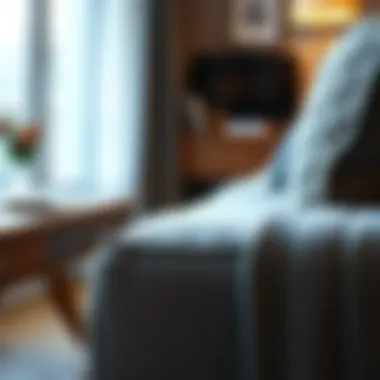

It's not just about aesthetics; the functionality of your sofa hinges on these often-overlooked components. Ensuring that connectors are well-maintained can save you the headache of premature replacements or, worse yet, costly repairs. Getting to grips with simple maintenance practices can extend the life of your sofa, making it a sound investment in your living space.
Regular Inspection Guidelines
When it comes to sofa connectors, a stitch in time saves nine. Routine inspections can go a long way in catching potential issues before they escalate. Here are some guidelines to follow:
- Visual Checks: Once a month, take a good look under your sofa. Look for any visible signs of wear, rust, or loosening.
- Tightening Screws and Bolts: Make it a habit to occasionally tighten any screws or bolts you find under your sofa. A quick turn of a wrench can prevent wobbling or creaking later on.
- Checking for Wear: Pay attention to the materials used in connectors. Metal ones may rust, while plastic can become brittle. If you notice discoloration or significant wear, it might be time for a closer look.
Regular inspections ensure your furniture remains safe and comfortable for years to come.
Cleaning Recommendations
Cleaning your sofa connectors might seem odd at first glance, yet a little cleanliness goes a long way. Dust, dirt, and grime can accumulate and impact functionality. Here's how to go about it:
- Dusting: Use a soft cloth to wipe down the connectors. This removes dust buildup and prevents corrosion, especially important for metal connectors.
- Mild Detergents: For stubborn stains or grime, consider using a mixture of warm water and a mild detergent. Ensure you dry the areas thoroughly afterward to avoid moisture retention.
- Check Surrounding Areas: Don’t forget to clean the area around the connectors, as debris can sometimes obstruct movement.
When to Replace Connectors
Knowing when it's time to replace connectors can seem daunting. However, paying attention to a few key signs can guide your decision:
- Signs of Fatigue: If connections begin to crack or show signs of heavy wear, it might be best to replace them. Structural integrity is paramount.
- Indications of Unstableness: If your sofa starts to sway or feels unsteady when you sit, that’s often a cue for connector replacement.
- Material Degradation: For plastic connectors, any brittleness or discoloration is a bad sign, indicating that they may snap or fail under pressure.
Keeping an eye on these factors can help maintain the reliability of your sofa configuration, allowing you to enjoy your living space without worry.
Future Innovations in Sofa Connectors
In a world where technology pervades every element of design, it is only fitting that sofa connectors evolve alongside furniture itself. The significance of this topic speaks volumes, especially in a time where consumers and designers alike are more discerning than ever before. Future innovations in sofa connectors not only promise to enhance functionality but also address growing concerns about sustainability and adaptability in furniture design.
Smart Connectors
Imagine a connector that does more than just hold two sofa pieces together; think of a connector equipped with smart technology that interacts with other devices in your home. Smart connectors are paving the way for a future where your sofa isn't just a piece of furniture, but a part of your smart home ecosystem. By integrating sensor technology, these connectors can detect weight, orientation, and even usage patterns.
Some of the notable benefits include:
- Customization: Smart connectors could allow users to adjust the layout of their sofas merely through an app, ideal for those who frequently rearrange their living spaces.
- Stability Monitoring: With built-in sensors, these connectors can alert users if the sofa is unstable—this could be particularly useful for households with young children or pets, mitigating potential accidents.
- Energy Efficiency: Smart connectors could operate in sync with other smart devices, optimizing energy consumption related to furniture care and maintenance.
Tap into innovation by exploring companies that are at the forefront of this smart furniture revolution. Innovations can be seen in products like the IKEA Home Smart family, which blends functionality with cutting-edge technology.
Sustainable Materials Development
As the environmental crisis looms, the furniture industry is under pressure to adopt more sustainable practices. Future innovations in sofa connectors will toggle heavily toward using sustainable materials that do not just meet aesthetic and functional needs but also the ecological ones. This development is essential in ensuring that furniture is not only beautiful but also responsible.
Examples of sustainable materials being looked at include:
- Recycled Metals: Utilising discarded or repurposed materials can reduce the carbon footprint associated with producing new metals. This doesn’t just have environmental benefits; it often comes with a lower price point.
- Biodegradable Plastics: Advances are being made in crafting plastics that decompose more easily, providing a path to reducing landfill waste from broken connectors in the long term.
- Bamboo and Reclaimed Wood: These materials offer a solid alternative to traditional hardwoods, with bamboo growing rapidly, making it an eco-friendly choice. Plus, using reclaimed wood can add character to furniture pieces, linking the past to the present.
The embrace of sustainable materials doesn’t only cater to eco-conscious consumers but also aligns with legislative movements towards cleaner manufacturing. As the future of sofa connectors unfolds, it’s crucial for brands to stay ahead of the curve by adapting to both smart technology and sustainability in a way that appeals to discerning buyers seeking durability and style.
End
In the realm of furniture design, understanding sofa connectors plays a critical role. This article highlights not only the various types of connectors but also their essential functions in establishing durability and comfort within a sofa's structure. As the furniture industry continually evolves, sofa connectors have adapted to meet new aesthetic and functional demands, becoming more diverse in design and material composition.
In reviewing key points, readers will find that the right connector can enhance a sofa's stability and flexibility, allowing it to fit various spaces and configurations. The choice between standard, pivot, strap, and hidden connectors directly impacts how a sofa maintains its shape and accommodates different uses over time. Understanding these distinctions helps homeowners and designers alike in making informed decisions that will ensure their investments stand the test of time.
Summary of Key Points
- Connectors define stability: Choosing the appropriate connector contributes to the overall durability of the sofa, ensuring that it withstands everyday use without compromise.
- Influence on aesthetics: The type of connector used can either blend seamlessly into the design or stand out as a statement feature, impacting the sofa's overall look.
- Material matters: From metal to plastic and wood, each material has unique properties that influence strength and aesthetic appeal.
- Ongoing maintenance: Regular inspections and cleaning improve longevity and help determine when connectors should be replaced, ensuring continued function.
- Innovations on the horizon: The rise of smart connectors and sustainable materials holds promise for future developments in sofa manufacturing.
Final Thoughts on Sofa Connectors
The nuances of sofa connectors are often overlooked by many, yet they are integral components that can either enhance or detract from a chair's overall quality. As a homeowner or designer, recognizing the implications of each connector type and material opens the door to more informed choices. Investing time in understanding how these elements interplay can significantly elevate one’s furniture experience.
For more on furniture design and maintenance, consider exploring resources like Wikipedia or Britannica. Another useful community resource is Reddit for discussions and recommendations.

